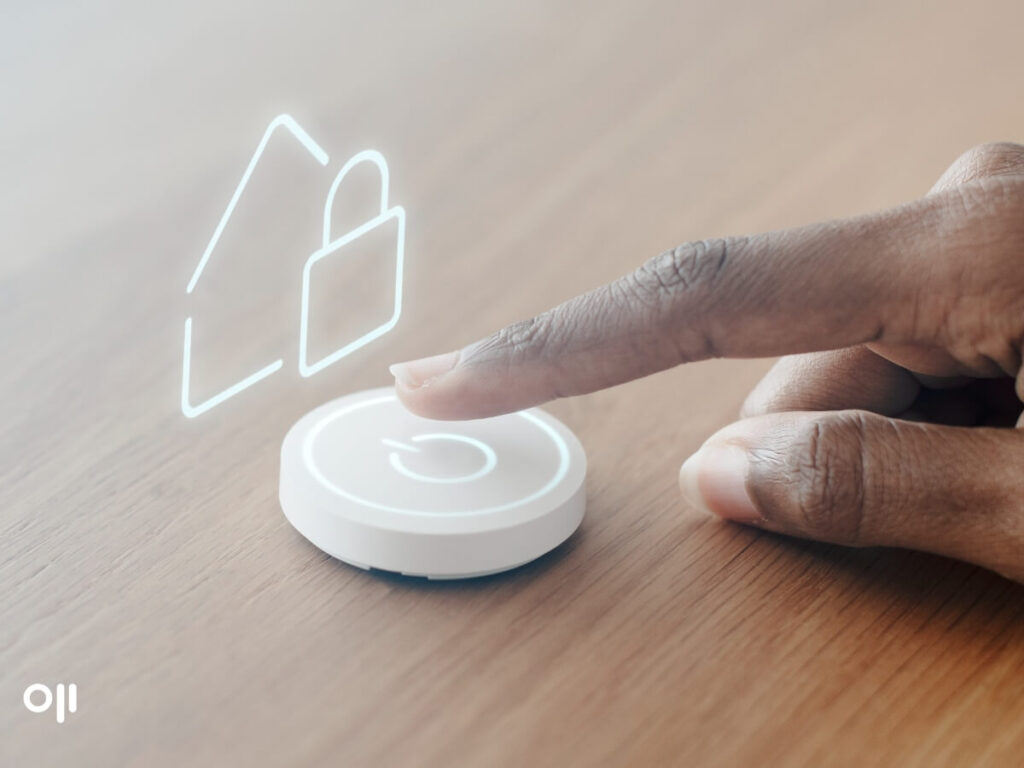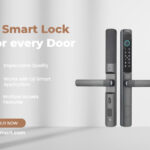Five Best Access Features of a Smart Lock

In the digital era, the age-old lock and key are being reimagined, leading to the advent of the smart lock—a union of technology, convenience, and security. This transformation opens the door to a host of innovative access features that far surpass the traditional key. Let’s delve deeper and explore the expanded symphony of access possibilities offered by smart locks, including keypads, fingerprint recognition, RFID cards, face recognition, and pin codes.
-
Keypad: A Digit-al Key
A smart lock with a built-in keypad lets you unlock your door using a unique numeric code, eliminating the need for a physical key. This is the perfect blend of security and convenience—you don’t need to worry about losing your keys or locking yourself out. Plus, you can create temporary codes for guests or service providers, allowing them access without handing over a physical key.
-
Fingerprint Recognition: Security at Your Fingertips
Imagine your door unlocking at the touch of your finger. With fingerprint recognition, this becomes a reality. This biometric feature allows you to unlock your smart lock with your unique fingerprint, offering a high level of security since each fingerprint is unique. In addition, fingerprint recognition enables quick access—a boon in those moments when time is of the essence.
-
RFID Cards: Tap into Convenience
RFID (Radio Frequency Identification) cards take the ‘contactless’ technology used in many public transport systems and apply it to home security. With an RFID-enabled smart lock, you can simply tap an authorized card against the lock to unlock your door. This feature can be especially helpful for children or elderly family members who might struggle with remembering pin codes or handling a smartphone app.
-
Face Recognition: A Look into the Future
With face recognition technology, your smart lock takes a leap into the future. By scanning and recognizing your facial features, this type of smart lock allows you access to your home, adding a layer of security that is tough to replicate. It’s a hands-free, key-free, and worry-free solution that combines the power of biometric security with the ease of advanced technology.
-
Pin Code: The Power of Simplicity
Sometimes, simplicity is the ultimate sophistication. With pin code access, you can unlock your door by inputting a unique code into your smartphone app or the smart lock’s keypad. This classic yet effective method provides secure access and allows you to share temporary pin codes with guests or service providers.
What is the most commonly used access Feature
Smartphone Access: Many smart locks connect to your phone via Bluetooth or Wi-Fi, allowing you to control them from anywhere through a dedicated app. This remote access is highly valued for its convenience and control, such as locking your door from your bed or while you’re away from home.
Keypad: Numeric keypads are also popular because they offer the ability to enter a home using a pin code. This can be particularly useful in situations where you don’t have your phone or key fob, or for giving temporary access to guests or service providers without needing to provide a physical key.
The use of biometric features like fingerprint and facial recognition is on the rise, but as of 2021, they are less commonly used than smartphone access and keypads. They’re expected to become more prevalent as technology advances and becomes more affordable.
Keep in mind that the “most commonly used” access feature can vary depending on individual user preferences, needs, and the specific smart lock model in use. Always choose the access method that provides the best balance of security and convenience for your situation. For the most updated data, you may want to refer to recent market research or consult with smart lock manufacturers or retailers.
Frequently Asked Questions Regarding Access Features of a Smart Lock
-
How does remote access work on a smart lock?
Remote access on a smart lock works via a wireless connection, typically using Wi-Fi or Bluetooth. This allows you to control the lock using an app on your smartphone, no matter where you are.
-
What is temporary access, and how does it work?
Temporary access allows you to give others access to your home for a limited period. This is usually done by generating a unique code or virtual ‘ekey’ that expires after a set time. It’s a handy feature for allowing access to guests, housekeepers, or contractors.
-
How reliable is fingerprint recognition on smart locks?
Fingerprint recognition on smart locks can be very reliable if used correctly. It uses biometric technology to recognize unique fingerprint patterns, offering a high level of security. However, the reliability can depend on the quality of the scanner and how well the fingerprint is registered in the system.
-
Can anyone use my RFID card to gain access to my home?
Only RFID cards that have been programmed and registered to your smart lock can unlock your door. If you lose your RFID card, it’s important to remove it from your system immediately to maintain security.
-
How does face recognition work on smart locks?
Face recognition works using biometric technology that scans and maps the facial features of the user. The smart lock stores this data and uses it to recognize the registered faces, providing access when a match is detected.
-
Are pin codes secure enough for smart locks?
Yes, pin codes are a secure access method when used correctly. It’s important to choose a unique code and not to share it widely. Some smart locks also offer additional security measures, like auto-locking after a certain number of failed attempts.
-
Can I use multiple access features on my smart lock?
Yes, most smart locks support multiple access methods. You can usually choose between using a smartphone app, a physical key, a pin code, an RFID card, and biometric data like fingerprints or facial recognition, depending on the specific features of your lock.
Conclusion
Choosing a smart lock is like orchestrating a personal symphony of security, where each access feature plays a unique note. The keypad hits the high notes of convenience, fingerprint recognition provides the powerful bass of security, RFID cards maintain the rhythm of easy access, face recognition solos with their futuristic melody, and pin codes round out the harmony with their simplicity.
The future of home security isn’t just about locking and unlocking—it’s about choosing how you interact with your home. So, embrace the evolution and unlock your home’s potential with the diverse access features of a smart lock.



Leave a Reply
Want to join the discussion?Feel free to contribute!